Media | Articles
Scout Trip: Playing in the Woods and (Mostly) Surviving the Interstate
In yesterday’s installment, we drove our vintage SUVs from the birthplace of the International Harvester Scout in Fort Wayne, Indiana, to Super Scout Specialists in Enon, Ohio. In this article, we go off-roading in Kentucky and head to the night’s stop in North Carolina, en route to the groundbreaking of the new Scout Motors plant in South Carolina. -Ed.
We left Enon on a Monday afternoon in our five vintage International Harvester Scouts, headed south towards our overnight stop in Lexington, Kentucky. We had probably spent too much time at the original, closed-down International Harvester plant in Fort Wayne that morning, and even more at Super Scout Specialists, and we needed to make ground.
That’s difficult when your vehicles can barely top 50 mph. So slow was our entourage that we didn’t pass a vehicle—a struggling old Mitsubishi on Interstate 40—until Tuesday afternoon. We sped by at maybe 55 mph, but we were going downhill. Much of this leg of the trip was spent just trying to stay out of the way and hoping that our Scouts—the oldest from 1967, the newest from 1979—would make it to Tuesday night’s hotel, in Asheville, North Carolina. (One of them did not.)
First, we had to get to Lexington.
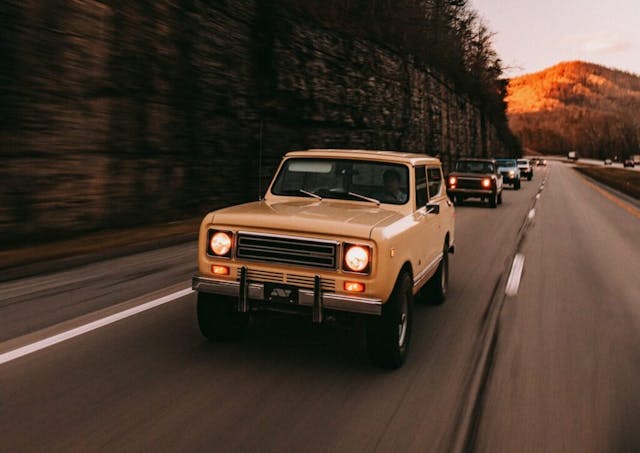
I had started the day in the Siam Yellow Scout, a 1978 model with a 345-cubic-inch V-8 and a Borg-Warner T19 four-speed manual transmission. It belonged to Sean Barber, who owns Anything Scout, a parts and restoration shop in Iowa. Barber also owned the red 1967 Scout and the Glacier Blue 1979 model.
The jacked-up white 1975 Chevrolet-powered Scout II restomod is owned by Scout Motors and was built by Riptide 4×4. It had a massaged 6.0-liter V-8 with headers, a General Motors automatic transmission, a four-inch lift, and 33-inch tires. It was very loud, but in a good way.
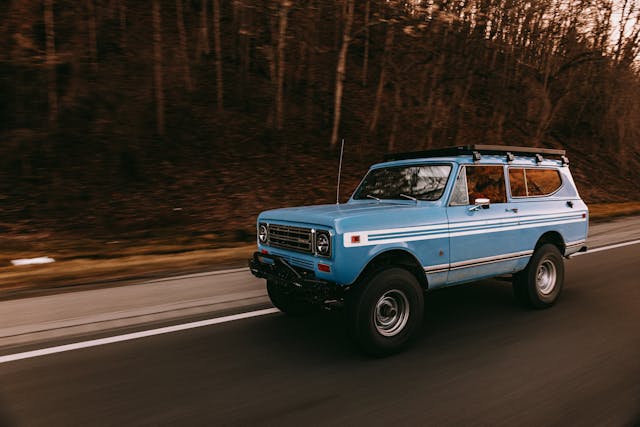
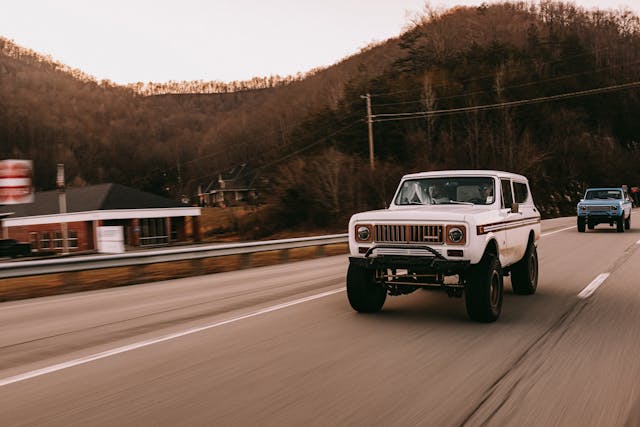
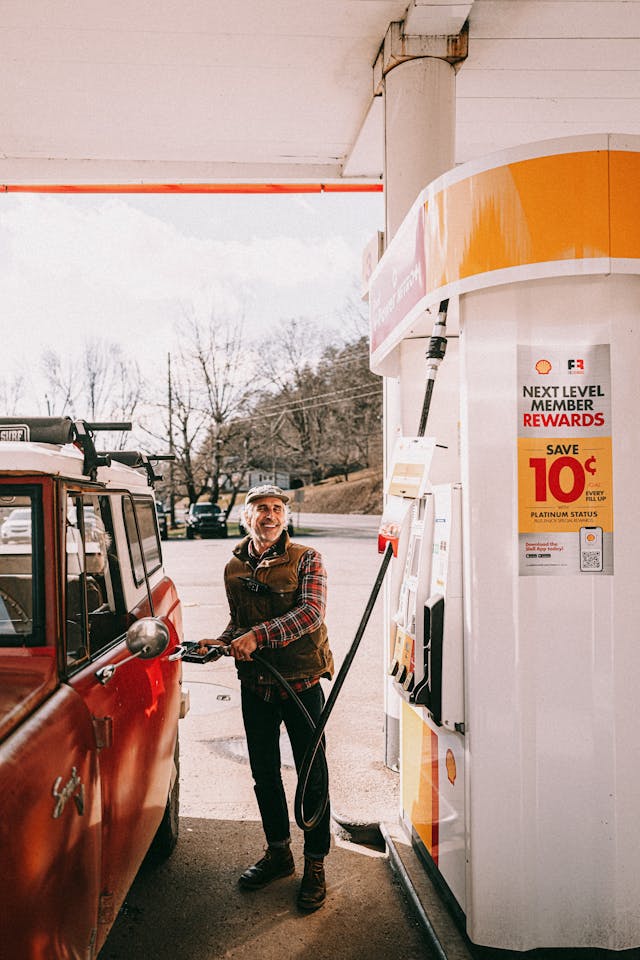
We took mostly two-lane roads until we reached Interstate 75. From there, it would be a pretty direct trip to Kentucky. The yellow Scout was a pleasure to drive, well-sorted but still original. The long-throw transmission was truckish, which is OK because the T19 is a truck transmission, but easy to drive. With just one paint job in its life, the yellow Scout was everyone’s favorite.
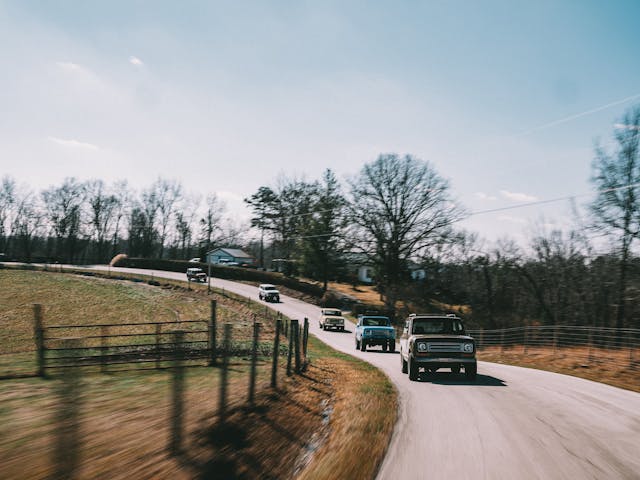
I later transitioned to the 1979 Tamarak Bronze Rallye edition Scout II—the Rallye equipment consisted mostly of big, white Rallye decals and white spoked wheels. This Scout belongs to Navistar, the company that was left when International Harvester went out of business. Volkswagen bought Navistar in 2021 in a deal worth $3.7 billion, which, incidentally, is how it acquired the Scout name and is able to use it for Scout Motors, the startup that will build the electric model at the new plant in South Carolina.
This Scout had been sitting for years, possibly decades, having begun life as a test mule for the IH Scout prototype program in Fort Wayne, and had never been sold. It had the deluxe (plaid) interior, air conditioning, and an AM/FM radio that wouldn’t hold a station. There was a seat belt but no shoulder harness.
Marketplace
Buy and sell classics with confidence
The gas gauge didn’t work—didn’t work in any of the Scouts I drove, for that matter—and the speedometer was off by at least 40 mph. There was also a lot of play in the steering, which made staying in one lane a challenge. But the 345-cubic-inch V-8 and Chrysler Torqueflite 727 three-speed automatic transmission seemed to operate in harmony. Everything else that worked, which admittedly wasn’t much, was gravy.
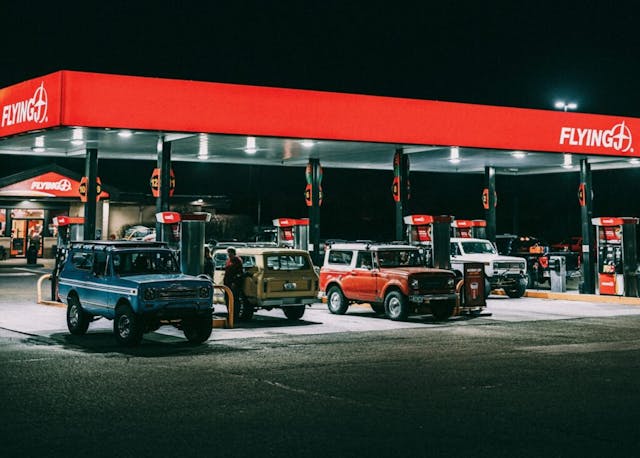
Because of the faulty gas gauges, none of us knew what mileage we were getting, only that it wasn’t very good. We stopped for gas a lot. As we neared Cincinnati, the skies began to darken—it was getting dark anyway—and about the time we crossed into Kentucky it started to rain. Scouts were not known for their windshield wipers, so I held off as long as I could before turning them on. Finally, I had to, and the results were pretty streaky. It was pouring by the time we reached our hotel in Lexington.
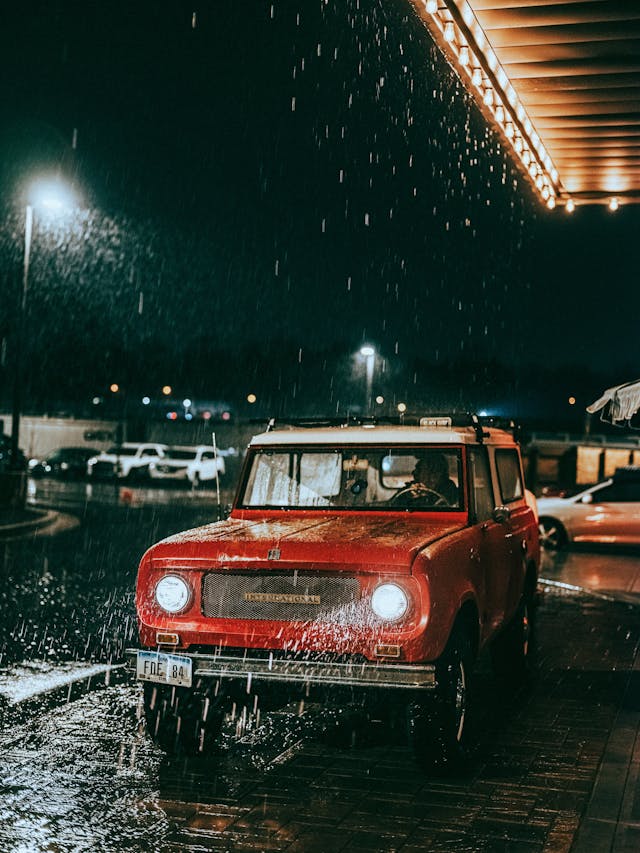

***
Tuesday morning was crisp but clear, with last night’s rain completely gone. I got into the Glacier Blue 1979 Scout II, which also had a 345-cubic-inch V-8 and a 727 Torqueflite automatic. It also had a working AM/FM radio, and listening to the stations I was able to pick up, I was seriously missing Sirius/XM satellite radio.
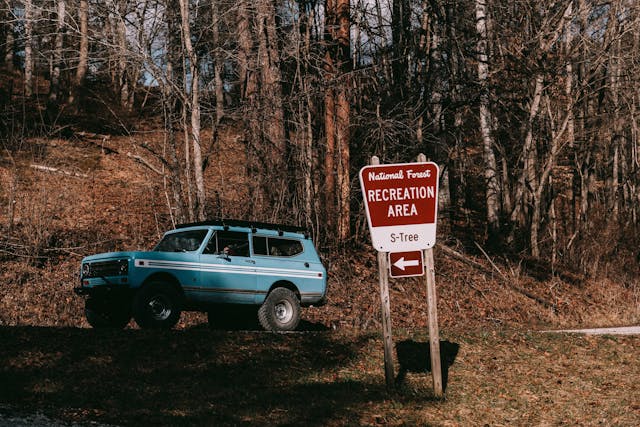
It was time for some off-roading, so we left Lexington and headed southeast for Beattyville, Kentucky. It did not go exactly as planned. We turned right, down a narrow paved road that soon became dirt, and were just getting underway when we came to what looked like a river. It was a small creek when the Scout Motors team mapped out the route, but with last night’s two-inch rainfall, there wasn’t any way we could continue—we had no clue where the trail was under the water. The lifted white restomod Scout dipped in a toe and promptly withdrew it.
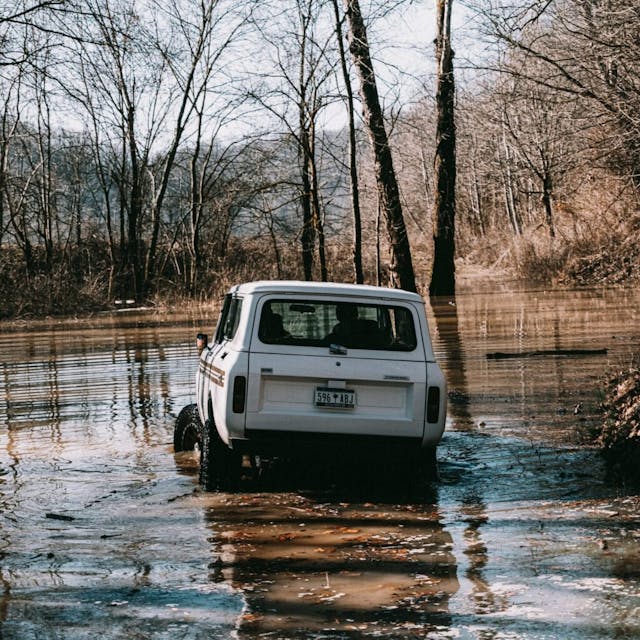
We backtracked and tried to go in from a different angle. No luck—that way was rained out, too. The third time was the charm. We headed toward the Daniel Boone National Forest, near McKee, and found a trail that was wet but not flooded. We locked in the Scouts’ front hubs, shifted into four-wheel-drive, and proceeded.
It was there that the Scouts shook off their 40-plus years of obsolescence. No, they didn’t have electronic traction control, automatic descent control, or even antilock brakes, but they had what was needed to get the job done: Good tires, V-8 power, and low-range gearing that would pull out a tree stump.
We made a couple of water crossings, the second one pretty deep, thanks to the rain. All the Scouts took the creek in stride; a newer white Chevrolet Silverado apparently didn’t. The pickup had made it through and another 50 feet up the narrow trail, where it appeared to have died. It sat exactly in the center of the trail, hood up, no one around. We barely had room to drive around the Chevy, but we were feeling pretty smug when we did.
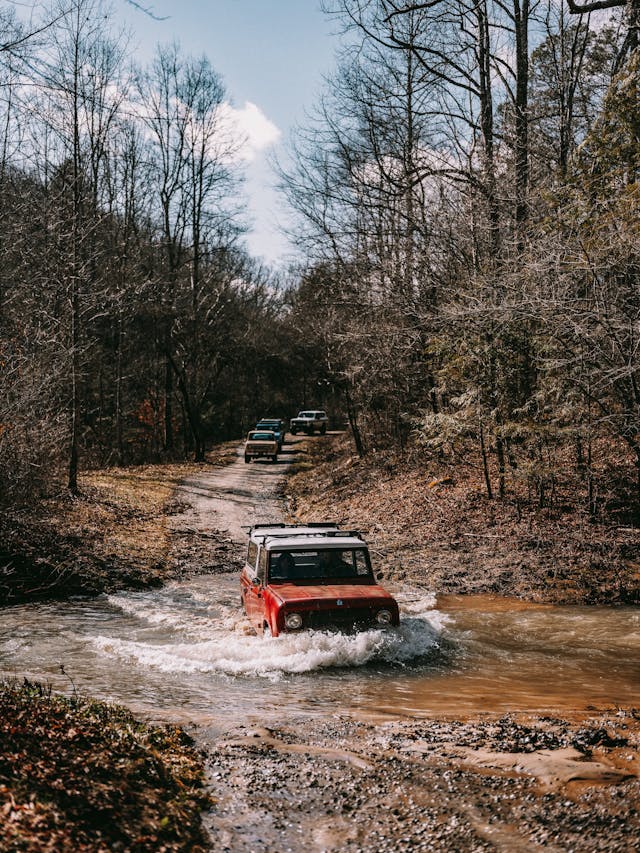
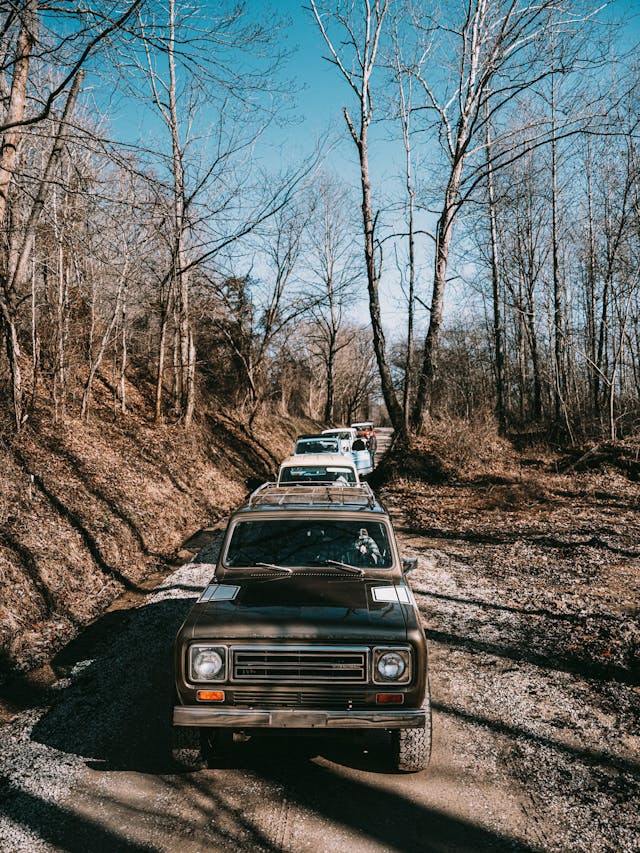

We continued on, eventually reaching a campground with a rustic but unlocked bathroom. After that, the trail ended with a fence and a locked gate; we decided we were hungry and headed to a restaurant. As Robert Frost would say if he were on the trip, we’d have miles to go before we sleep.
***
If Tuesday morning was fun—and it was—the afternoon and evening were all about getting to Asheville, North Carolina, about 238 miles away, according to Mapquest. We headed southwest through the Appalachian Mountains, eventually picking up Interstate 40 in Tennessee, then Interstate 81.
It was a slog on the Interstates—we’d pass 18-wheelers going uphill, and they’d pass us back going down. As it turned dark, it became harder to stay in formation. Were those Scout headlights behind me, or something else?
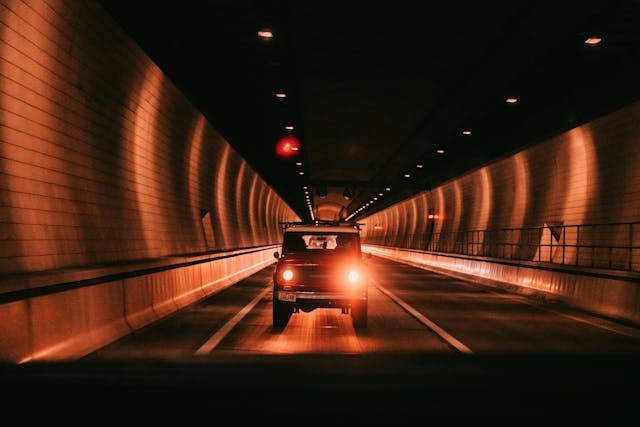
Well after dark, each set of headlights belonged to something else. The last two Scouts in our caravan—the white, Chevy-powered restomod and the 1967 red Scout—weren’t keeping up. Turned out that one of them had stopped, and the other one stayed behind to help.
Surely, I thought, it was the 57-year-old, red SUV that had broken down—the hilly Interstates had to be tough on it, even though it had a small V-8. But I was wrong. Sean Barber and his wife Heather were in the red Scout, and they stopped when the white one pulled over.
The Scout Motors driver and passenger in the white Scout had slowed when they smelled smoke, and then there was no power. The culprit was a fried electronic control unit. And as good a mechanic as Barber is, without a spare ECU, nobody could fix it. I had not driven it yet, and frankly, I was OK with that: The modern transformation really didn’t speak to me the way the original Scouts did.
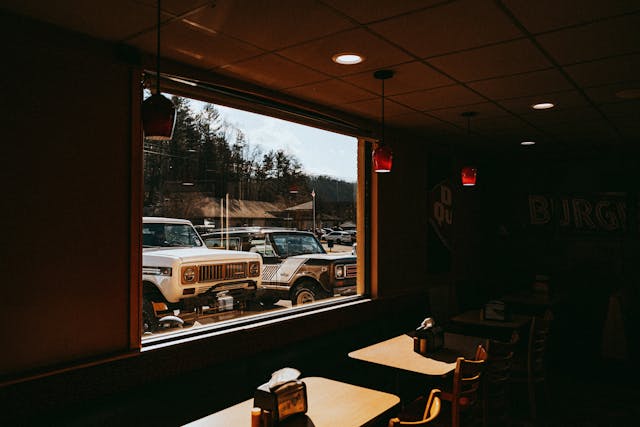
They called for a tow truck and waited. Two hours later, it showed up, loaded the Scout, and headed for Charlotte, North Carolina, where Scout Motors stores the restomod Riptide Scout. Towing fee: $1500. Looking at our inventory, it would likely have been voted The Scout Least Likely to Break.
But it did. We would not see the white Scout again.
Tomorrow, join us as we set off to the groundbreaking for the Scout Motors plant in South Carolina.
***
Check out the Hagerty Media homepage so you don’t miss a single story, or better yet, bookmark it. To get our best stories delivered right to your inbox, subscribe to our newsletters.









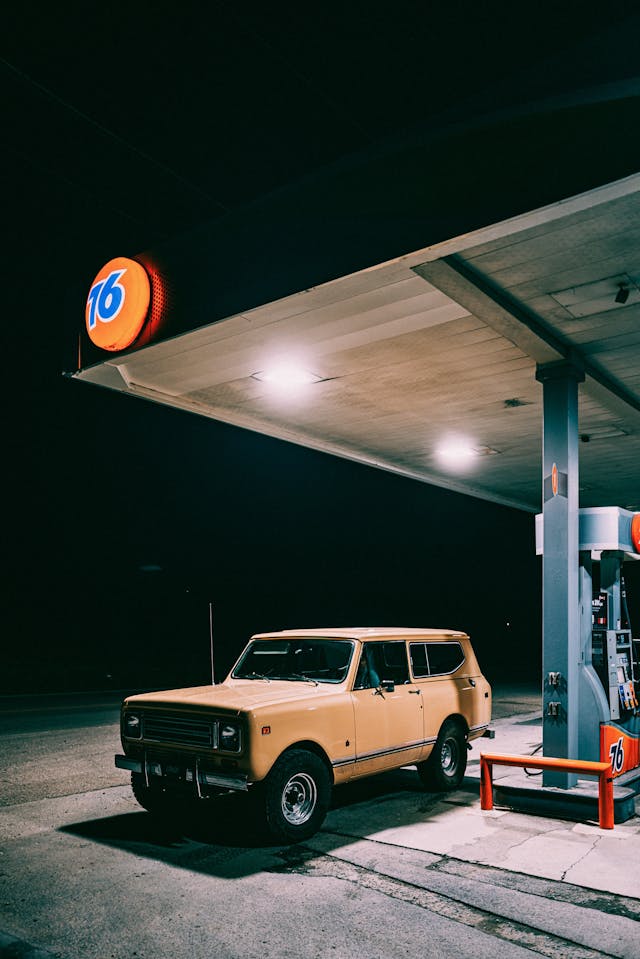

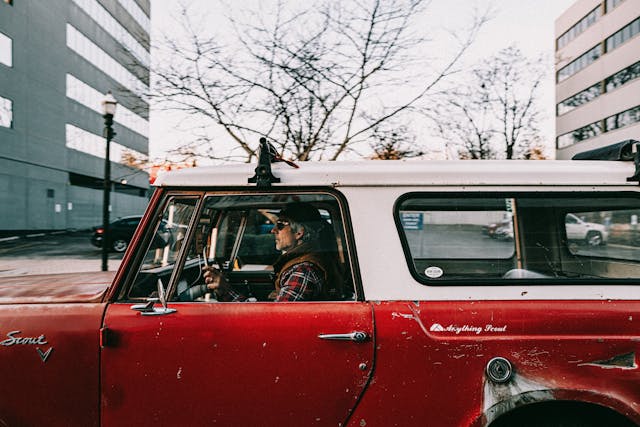
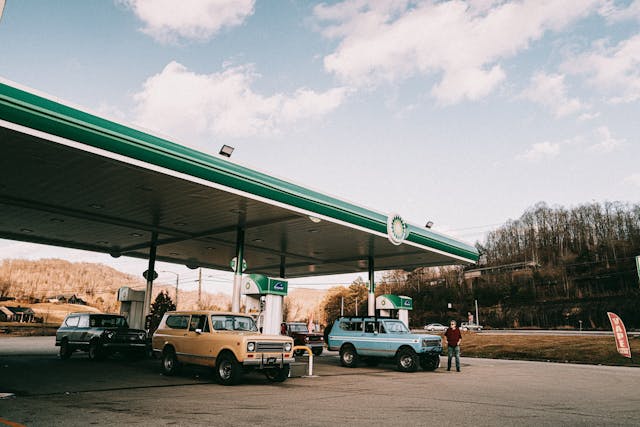
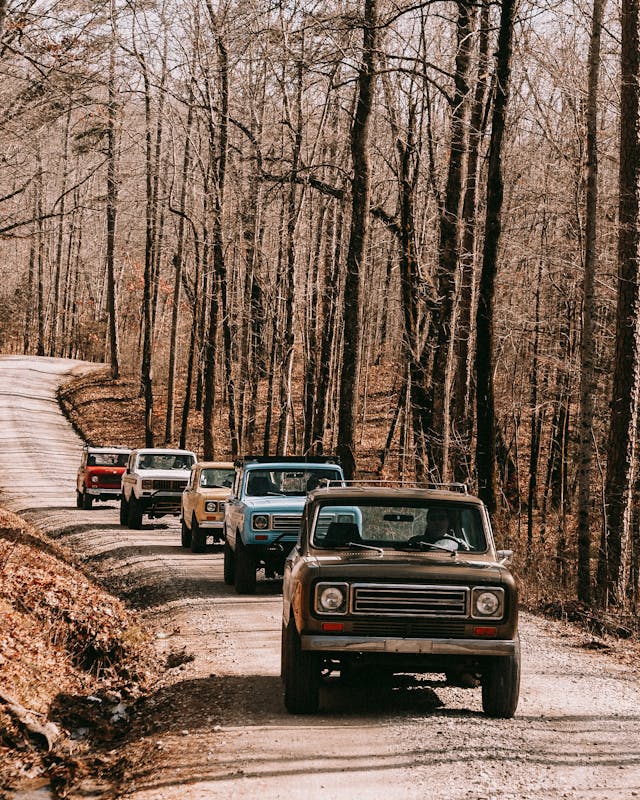
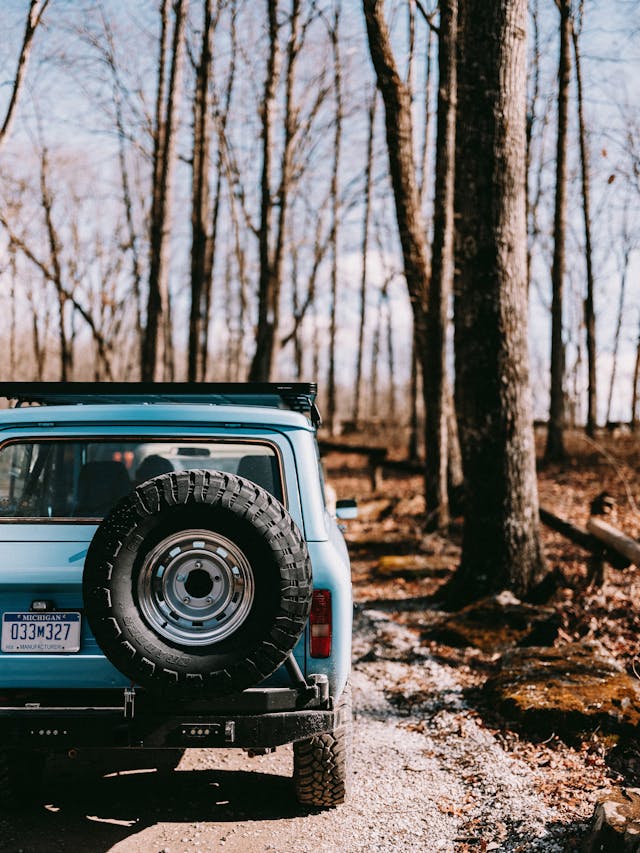
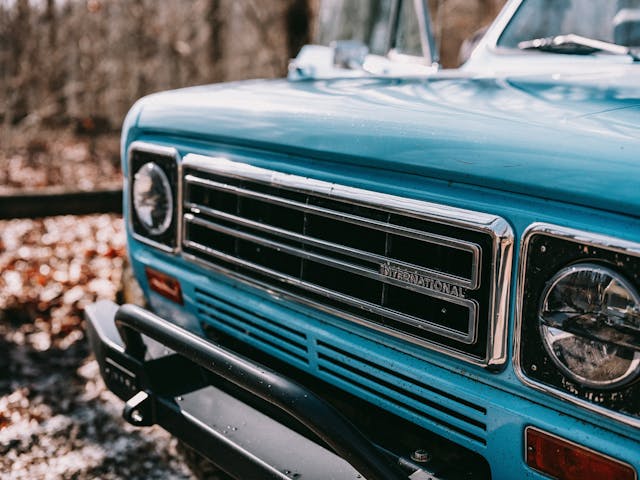


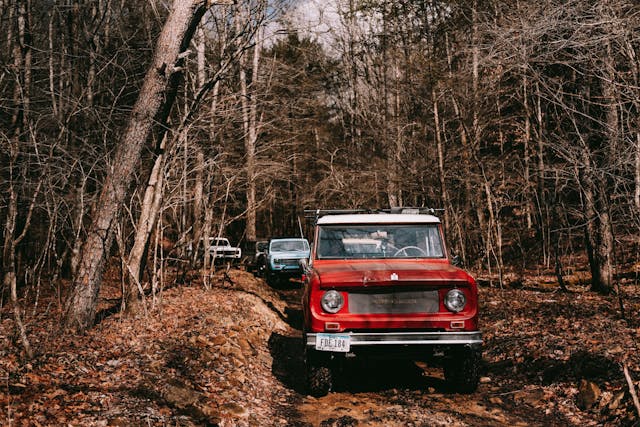
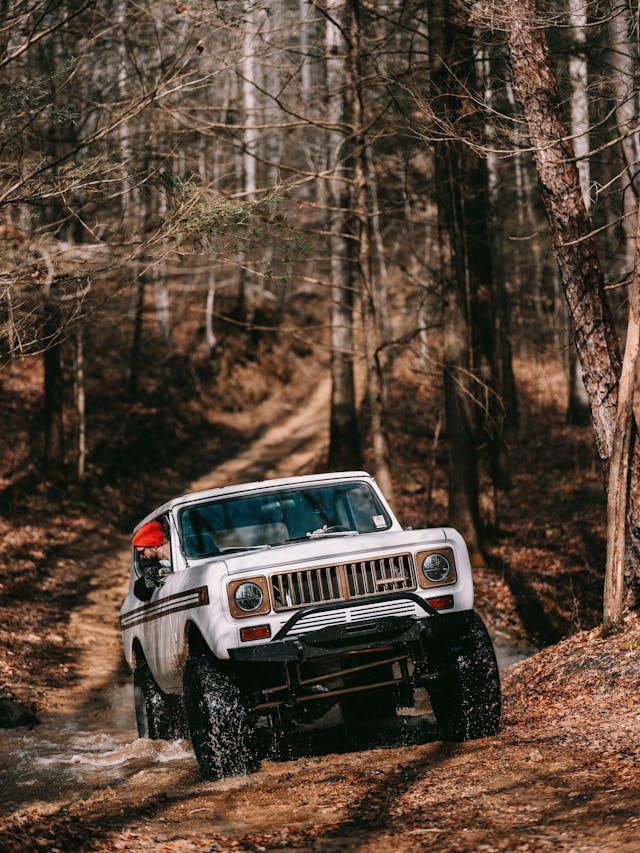

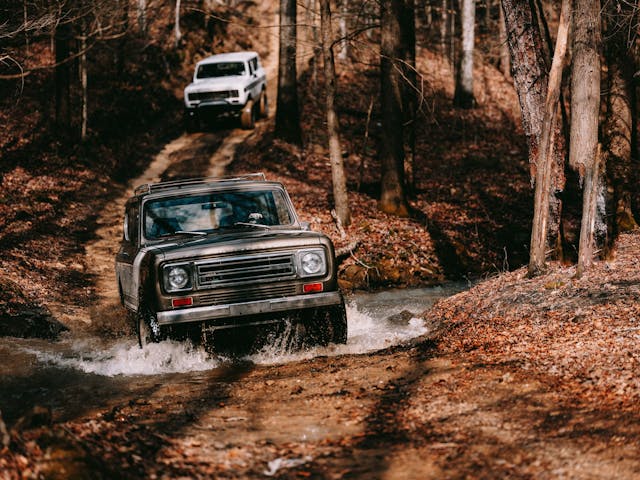

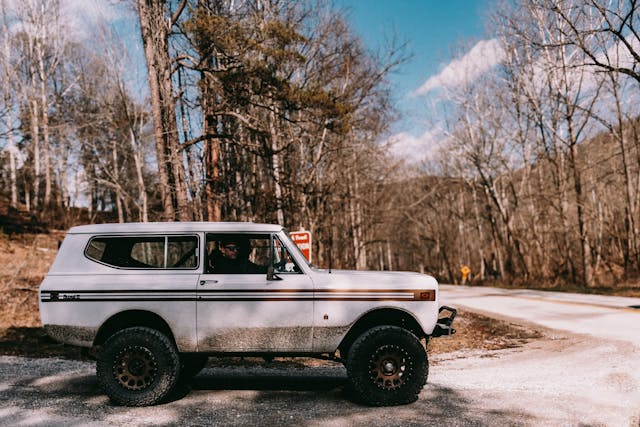
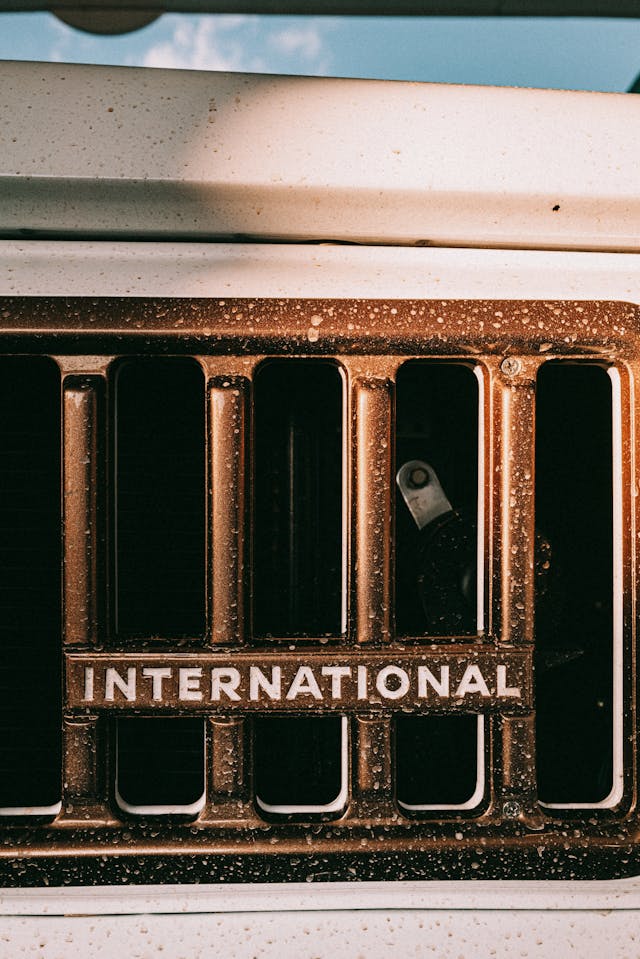
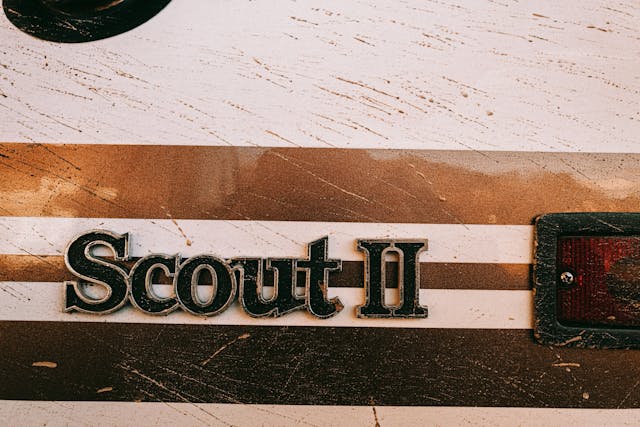
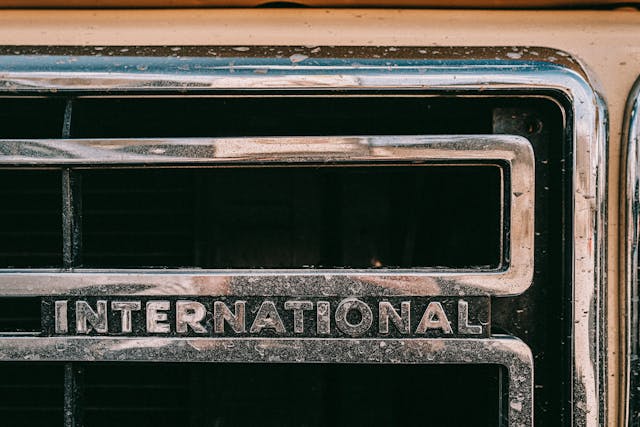























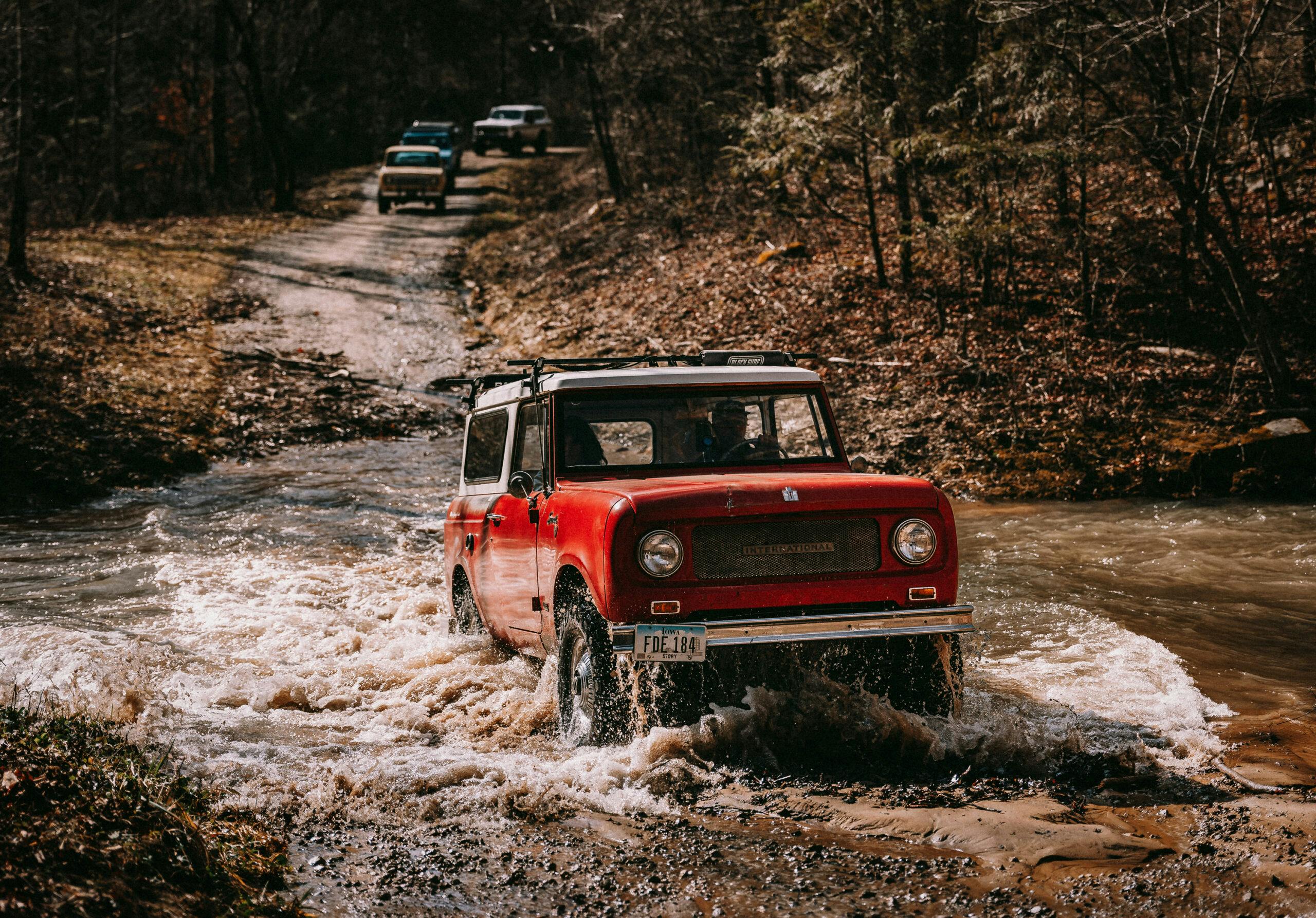
And that’s exactly why I drive my 79 Scout to work every day. It never breaks. The entire spare ignition system fits under the seat. Noting else on the truck will just fail without advance warning in time to change next weekend.
Btw , that 345 will get about 15 mpg highway at those speeds and has a 19 gallon gas tank so you can figure out the next time you need gas.
Would be on line already to buy the new one … if it was a hybrid instead.
“I had not driven it yet, and frankly, I was OK with that: The modern transformation really didn’t speak to me the way the original Scouts did.” Certainly sounds like the author had his mind made up about a resto-modded scout, long before there was ever engine trouble. I own 3 scouts, 2 with 345s and an LS swapped Scout and the LS gets 10x the miles as the other ones each year due to the fun and driveability of the LS and modern drivetrain.
I have 2 guesses: 1 is that, given the water crossing, the white chevy that broke down was hydro-locked. 2 is that the LS swapped Scout with the fried ECU is also related to the water crossing. I may be wrong on both counts, but it seems too coincidental, especially as the LS swap should have theoretically made it most reliable, even if I like the author prefer the original equipment for sentimentality.
100% related to the deep water crossing. There’s a pic of that white scout in water up to the rocker panels. You have an electric fuel pump, transmisson cooler, who knows what underneath could have been submerged. The author sh** all over the white scout in all
3 of these articles he wrote, so he certainly had his opinion made up of the LS swap long before they ever left from Indiana. What a shame.
Looks like a fun trip so far. LS modded would be fun to try.
Sometimes the best thing about the “Good Old Days” is they are gone.
Not looking to start a feud and this is off subject, but I honestly need someone to explain to me why there is what seems to be an obsession with an LS swap into everything. An engine compartment full of sensors and miles of wire , none of which can be serviced on a trail or roadside vs an entire ignition and fuel system that can fit in 2 hands. More efficient and more power yes, but I don’t see how it more reliable . I’ve stopped watching certain car shows because in 99% of the episodes they end up turning whatever they are working on into a Chevy. No insult intended as I have a 90 Caprice wagon and my son an 87 Firebird with a 305. None of my Scouts ever died with no warning because a crank sensor or electric fuel pump or defective rollover sensor went bad but my ‘06 Magnum did mid vacation ( replaced by ‘90 caprice ) and my SRT4 did driving to work, twice ( replaced by 79 Scout ).
I’ve heard some say things like , I can’t just get in on a cold morning , start it and go. An improperly adjusted choke is hardly a reason for an engine swap. And modern mpg can be achieved with a gear swap and or overdrive.
Although I’ll admit. If the coming new scout had an LS – hybrid option,,, then I’d buy one
And which Scout was the only one that didn’t make the whole trip? 🙂
The LS swapped scout blew a fuel relay after it was submerged into the water. $3.00 part.
The only problem we had with our Scouts, 64, 69, and 79 was the ’69 would sever the clutch cables and it was a design flaw. But it had the straight 6, AMC motor, in it and was great. It’s still waiting to be resurrected after many years of sitting since my Dad passed away.